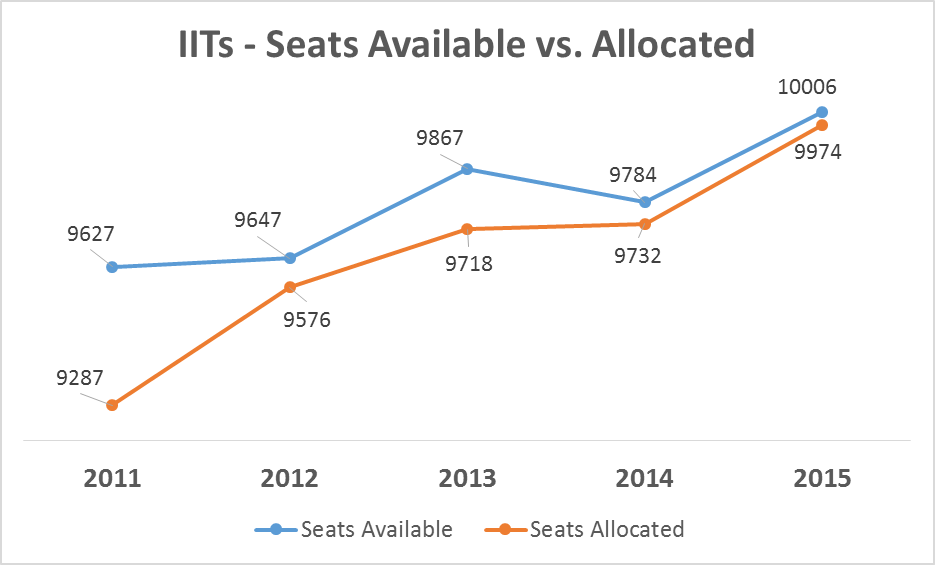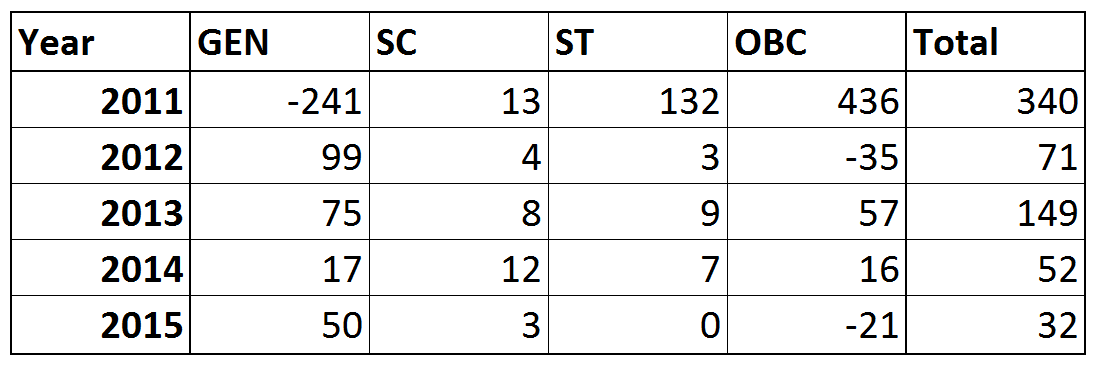Last month, the JEE
(Advanced) conducting authorities released a set of data reports on the final
results of the JEE (Advanced) and its previous avatars, from 2011 onwards. In
this set of analysis of these reports, we will discuss individual elements of the
reports and how they are shaping up for you.
In Part 2, we
discuss the number of seats being left vacant upon completion of admissions to
the IITs. The institutes are: IIT Bhubaneswar, IIT Bombay, IIT Delhi, IIT
Gandhinagar, IIT Guwahati, IIT Hyderabad, IIT Indore, IIT (BHU) Varanasi (Until
2012, known as IT-BHU), IIT Kanpur, IIT Kharagpur, IIT Madras, IIT Mandi, IIT
Palakkad, IIT Patna, IIT Jodhpur, IIT Roorkee, IIT Ropar, IIT Tirupati, and ISM
Dhanbad. (IIT Palakkad & IIT Tirupati started operations in 2015. All other
17 institutes were operational as of 2011.)
In 2011 & 2012, IIT admissions were independent of other colleges, and students used to attempt the IIT-JEE to get into the IITs. This was replaced by the two tier JEE: JEE (Main) & JEE (Advanced) in 2013. Another change came about in 2015, when the seat allocation for IITs and other institutes – the NITs, IIITs, & GFTIs was held together under JoSAA. These factors may be taken into account when understanding the Hows and Whys of the reasons of seats being left vacant.
The number of available seats at the IITs have been increasing year on year, except in 2014, when there was a rationalization of 83 seats. At the same time, allocation and acceptance of seats has consistently increased every year, including in 2014.

The maximum number of seats left vacant in these 5 years was in 2011, when 340 seats were left empty at the IITs. Except for 2013, when 149 seats were left vacant, the number of vacant seats has been falling consistently.

Another aspect of the vacant seats is visible when we take into account vacancies category-wise. While vacancies in the SC & ST categories are typically consistent after 2012, the General category seats and OBC seats have seen over-allocation as well in some years. However, even with over-allocation in one category, vacancies in other categories have ensured that in total, seats are remaining vacant every year.

One of the major reasons of constituting the JoSAA was to ensure reduction in vacant seats at the IITs. Since there has been a major churn in the deciding factors of the allocation process, no major factor has stayed constant for more than two years, which may make it hard to analyse whether any particular factor was responsible for a rise or fall in the allocations. Looking at the data, at present, JoSAA has not shown any major increase in occupancy. Only after in-depth analysis of all factors is carried out, will we be able to understand if it was truly successful, as is claimed on some platforms.
